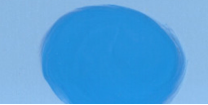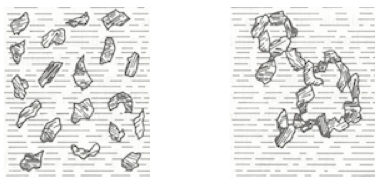Dispersing and Wetting Hydrophobic Pigments and Fillers in Water Based Paints to avoid Pigment Flooding and Floating
A critical part of any coatings formulation is ensuring that the coating will be free of inherent defects, including pigment flooding and floating. Waterborne formulations represent some unique challenges due to multiple factors, including the high surface tension and polarity of water that does not contribute to the wetting of most pigment and filler particles. In this article, I’ll define some important considerations in formulating waterborne paints to avoid pigment flooding and floating.
Flooding, Floating, Surface Tension, Bernard Cells, Flocculation and Agglomeration
Floating describes a mottled, splotchy appearance on the surface of a paint film. It is most apparent in coatings colored with two or more pigments and is a result of the horizontal separation of different pigments. Flooding is the phenomena observed when the surface color of an applied film is uniform but is darker or lighter than it should be. This is attributed to a vertical separation of different pigments in the film.

Surface Tension results when the force that occurs in a liquid at the interface differs from the forces within the liquid. Thus, surface tension is caused from the surface molecules having a higher free energy than those molecules in the bulk of the liquid.
Surface tension differential can cause a convection current resulting in a regular hexagonal surface pattern called Benard Cells. A hexagonal Benard Cell pattern results in smaller, more mobile pigment particles (smaller, less dense) being deposited on the perimeter and the less mobile particles (larger, more dense) remaining away from the perimeter.

Flocculation is the recombination of dispersed pigment particles that were not properly stabilized in the pigment dispersion. Flocculation is undesirable at it detracts from hiding and color development. Flocculation is reversible by applying a low degree of shear. In figure 2, the phthalocyanine (EU) blue pigment is flocculated. Upon rubbing with a finger, the deeper blue color returns.

Pigment agglomeration is defined as pigment particles that are clumped together without sufficient vehicle or wetting agents present between pigment particles. When agglomeration occurs, extensive shear and attrition forces are usually necessary to reinstate a stabilized pigment dispersion.
To read the full article about Remedial Actions to Overcome Floating and Flooding in Waterborne Paints, click here.

